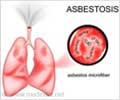Urbanization is not bad altogether. Undertaking the correct approaches during urban planning can avoid most of the environmental problems associated with it.

The process of a society changing from rural to urban can be termed urbanization. As the number of people moving into cities soar, urban centers expand too, erasing rural, agricultural and forestland in their wake.
This year, the world’s urban population of over three billion people, has for the first time in history exceeded the number of those living in rural areas. Going by this trend, by 2030 around two-thirds of the world's people will be living in cities. According to a July 2006 estimate, in India around 30 percent of the population lives in urban cities.
Is urbanization bad? Not necessarily. Undertaking the correct approaches during urban planning can avoid most of the environmental problems associated with it. Obviously this has not happened. Among the many evils urbanization has unleashed, respiratory problem is one.
How Urbanization Causes Respiratory Problems
• Urban activities, such as combustion, industrial activities, mining, and drilling lead to higher levels of toxic Industrial and Vehicular Emissions.
• Global warming and the resultant Climate Change
• Poor Indoor Air Quality (from modern building materials and other household products)
One of the main culprits is the burgeoning of vehicular flow. Motor vehicle emissions include carbon monoxide, oxides of nitrogen, benzene, formaldehyde, etc. Along with these are diesel particulates; solid carbonaceous particles contribute to the total particulate matter. Such microscopic particles can be inhaled into the lungs where they remain lodged and bring about lung damage and other related disorders.
In addition to this are even graver illnesses, such as bronchiolitis, pneumonia, chronic obstructive pulmonary disease (COPD), congestive heart failure, lung cancer and even cardio-vascular mortality. The cardiovascular system can be affected when lungs cells release a variety of potent chemical mediators in response to respired toxins. In addition to compromising the function of other organs, this response causes lung inflammation and impairment of lung function. As the respiratory system is closely associated with blood vessels, soluble carcinogens could also be transported from the lungs to other parts of the body.
According to environmental specialists, children are highly vulnerable to respiratory problems brought about by air pollution. Bronchitis attacks in city-dwelling children are becoming very common. A chronic form of bronchitis could lead to diseases that cause obstructions in the lungs, also known as COPD.
Another outcome of air pollution is secondary lung injury. Here, the airway tissues, which are laden with bio-activation enzymes, transform organic pollutants into reactive metabolites that bring about this damage.
How do these pollutants brought about by urbanization, damage the respiratory system? By-
• Breaking down the natural defense system
• Damaging and injuring lung tissue
• Directly sparking off asthma and allergies or worsening them
• Causing lung inflammation and decreased lung function
• Causing carcinomas e.g. Benzene is linked with lung cancer
• Causing fibrotic changes in lungs e.g. through inhaled particulate matter
The Role Of Global Warming In Respiratory Problems
Global warming offsets more droughts and heat waves, resulting in a greater number and severity of grass and forest fires. This in turn puts particles that stimulate asthma; a common enough respiratory problem, into the air.
Climate change which results from global warming lead to more wind, dust, and sandstorms, which increase noxious atmospheric particles, that people must inhale. This is not all. Other climate changes like longer summer-like seasons and relatively shorter winters, coupled with higher levels of atmospheric carbon dioxide lead to a substantial increase of organic air-borne irritants such as ragweed, mold, bacteria etc.
Indoor Air Pollution
Indoor air pollution can be as toxic as outdoor air pollution. Well-spaced, open and well- ventilated houses are very rare in urban centers. As people are spending more and more time indoors, poor indoor air quality has become an issue that cannot be compromised.
These pollutants are mainly of two kinds:-
• Biological Pollutants, such as mould, bacteria and dust mites. These breed in moist and poorly ventilated rooms. Ineffective filters in AC (air conditioner) ducts can allow accumulation of dust and fungi formation. Those allergic to these organisms can experience allergic reactions and respiratory problems.
• Chemical Pollutants: Gases and particles that come from combustion appliances, tobacco smoke, household and personal care products, various building materials and outdoor air.
1. Combustion appliances, such as gas stoves, fireplaces and furnaces produce carbon monoxide, nitrogen dioxide and small airborne particles called 'particulate matter'.
2. Tobacco Smoke: Experts have identified more than 4000 chemical compounds, including nicotine, in second-hand smoke, which can offset and worsen breathing problems. Tobacco smoke is the most harmful and widespread known indoor air pollutant.
3. Building materials and Personal care products: Urbanization entails the greater use of modern household items like furniture, building materials, paint, wallpapers, cleaning products, glues etc. These along with some cosmetics emit gases into the air. This process is termed ‘off-gassing’. One such toxic gas formaldehyde, in high quantities can cause irritation of the eyes, nose and throat and can worsen asthma symptoms in children and infants. Exposure to formaldehyde over long periods of time can also bring about allergic sensitivity in children and the elderly. An extreme case, cancer of the nose, has been linked to excessive formaldehyde exposure, too.
4. Volatile Organic Compounds (VOCs): These are chemicals released from diverse sources such as office equipment, cosmetics, aerosols, household products, furnishings, tobacco smoke, construction materials, automobile emissions, varnishes etc. Benzene is an example of a VOC, which can exacerbate respiratory problems.
How To Combat Respiratory Diseases
• Go ‘Green’: Undertaking eco-friendly activities that help curb air pollution and global warming
• Muzzle-Up: Try covering your nose and mouth with a cotton hanky while traveling through rush-hour traffic
• Enforcing No-Smoking zones
• Choosing Organic and Natural cleaning and personal care products
• Installing Carbon monoxide detectors in buildings
• Having buildings inspected for leaking lead and asbestos
• Choosing homes and schools away from industrial sites, highways and main roads
• Growing indoor plants: Plants do an excellent job in devouring toxic air pollutants such as formaldehyde, benzene and carbon monoxide. Try plants like Bamboo Palm, Philodendron, Dracaena, and Golden Pothos etc.
• Sunning and airing rooms to prevent dampness, mites and mould
• Strengthening the immune system with well-balanced meals and exercise
• Practicing Yoga and breathing exercises for cleansing and strengthening of lungs
• Preventive Medicine Ayurvedic medicines like ‘Chyvanprash’ are said to protect against respiratory ailments
Source-Medindia






